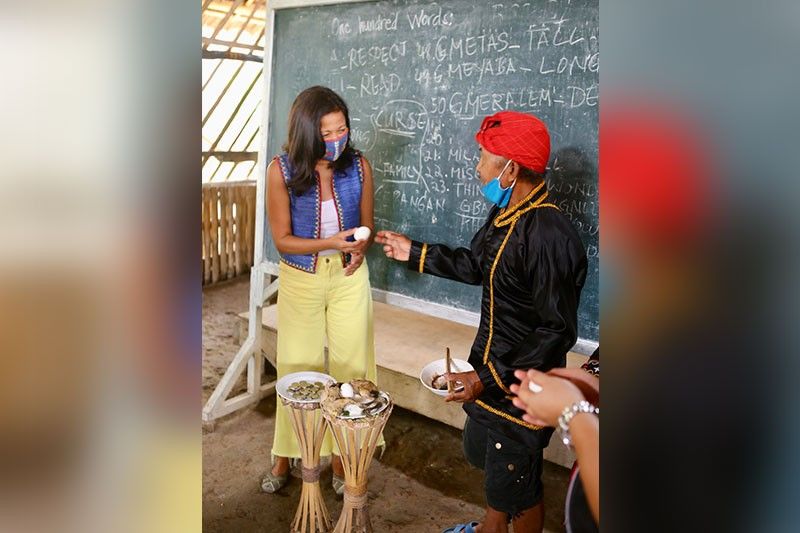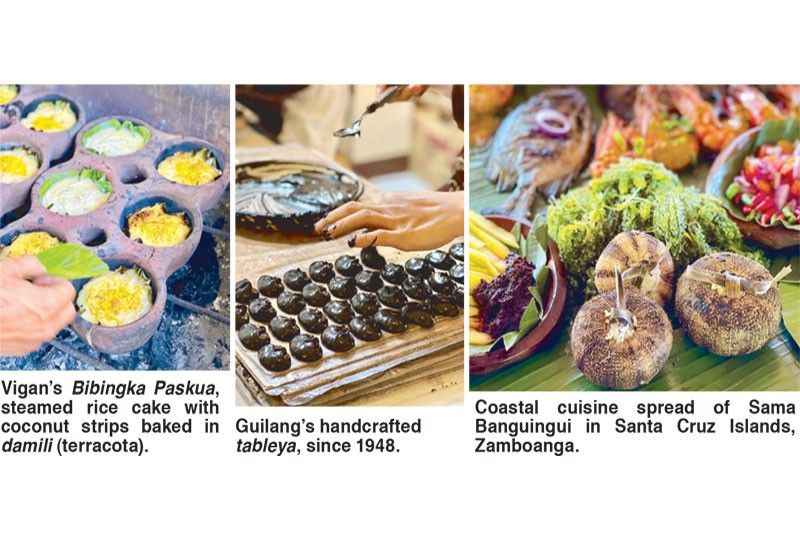Sumptuous adventures around the Philippines

To eat is to travel, whether you’re dining at home or in a faraway province. Food is the passport of the gustatory membrane to journey to places near and far.
To eat is not only to satiate the appetite but to capture happiness in the moment. It is also to celebrate many memories.
Foodie or not, you ought to get hold of Clang Garcia’s Philippine Food Holidays, a book about food around the Philippines. Because food is part of society and culture, be it pop or traditional, you will get to nibble on Philippine tradition, too, when you partake of the book. Luscious and delicious are the offerings. Every page is a sumptuous delight. The aroma of the food leaps out from every photograph in the book.
History is served well on the table that is the tome called Philippine Food Holidays as the culinary road trip begins with Intramuros where the restaurants and food outlets in the remnants of the former seat of Spanish colonial sovereignty figure prominently. As it is, not only flavors were served in this chapter as Spanish-Chinese cuisines like paella, lumpiang ubod, pancit and kaldereta come side by side with an abridged but encompassing discussion of fascinating churches and museums in the area and other historical treasures that are in ample amounts so as not to cause indigestion as you read. The book is hard to put down for a reader like me who values culinary richness and historical riches. (At some point, it’s a history book masquerading as culinary heritage that is ingeniously written in 140 pages.)

I was still slurping the joyous flavors of Intramuros when my fingers run through the chapter on the stone’s-throw-away Binondo, reportedly the oldest Chinatown in the world. Ooh-la-la! The power of Clangs’s words and the ecstasy brought about by the enticing photographs — black chicken soup, giant lumpia, egg foo yoong and pork dumplings with kuchay — guarantee salivation.
The book has the power to tickle the imagination and envision the sumptuousness of the food. And this imagination is strewn all over 7,641 islands of the country as the book explores the food popular and endemic to those places.
“The Philippine tourism industry was escalating at unprecedented growth, and Filipino food was gaining momentum. However, as 2020 ushered in, a global pandemic hit: COVID-19 was the name. Lockdown was implemented. The economy was shut down. Spirits were shattered. Fearmongering was spreading. What now?” Clang, who holds a seat at the council of advisers of De La Salle-College of Saint Benilde, noted in the book.
As an advocate of culinary heritage tourism, Clang thought of her friends and other food champions who “were fervently raising their pride of place” but were affected by the pandemic.
Clang, who, from time to time, joins me at home so we can both experiment in the kitchen as we laugh in wanton abandon as cloves of garlic fly from the mortar-and-pestle, is a culinary heritage explorer. The pandemic pushed her to be a good chronicler, traveling from all over Luzon, Visayas and Mindanao to document food and food history. She has traveled extensively across the islands to sink her teeth, so to speak, into her cultural roots through flavors. The deeper she dug into the culinary history of a place, the more she became satiated, full, filled.
In Bulacan, Clang, a resource trainer at the Department of Tourism’s culinary heritage projects, nibbled her way to Malolos and explored the city that celebrates centuries-old dishes in well-preserved ancestral houses and historic sites. She stumbled into empanada de kaliskis (a turnover in paper-thin, layered and scale-like crust filled with chicken and potato), Citang’s okoy (small fritter of julienned squash with big shrimps), Gorio and Mimi’s special kakanin (rice cakes) and Ocampo’s pastillas de leche.
In Pampanga, touted to be one of the country’s bastions of good food, roadside eateries became Clang’s fine finds for “heritage sweets and exotic fare.”
Colonial times and mouthwatering cuisines come aplenty in the chapter on Ilocos food. How the Manila Galleon trades influenced the food choices in Cavite and Batangas are also documented in the book. There’s also an interesting discussion on the hidden culinary gems like plantsado lamang lupa, kulawo and minanok that are endemic in the provinces of Laguna and Quezon.
The food in the book is not told a la Lara Esquivel or Anthony Bourdain but Philippine Food Holidays is a precious, luscious treasure on food history. Like it’s food island-hopping in the Visayas region. The coastal cuisines of Dumaguete, Cebu and Bohol extend from the classic to the contemporary.
The time-honored recipe of torta (a kind of bread like ensaymada but cooked in wood-fired clay oven) in Argao is discussed succinctly, yet it leaves an indelible mark in the mind. Words alone are enough to make one salivate for the sugary, buttery sensation of the actual eating of the torta.
“Dumaguete’s reverence for chorizo is remarkable,” Clang wrote in the book and went on to tell about her gustatory experience of the province’s famed smoked meaty delight. Clang was lucky she was made privy to guarded family recipes that could be traced to Spanish colonial roots.
The artistry of Cebu’s puso (steamed rice in a handwoven pouch) takes a certain prominence in the tome. I just knew puso could be eaten with a viand but learned something new — that it could be dipped in a concoction of sautéed garlic, onions, pork liver, intestines and brain. Interesting. But the concoction may not be for the faint-hearted.
There were more surprises along the way, I mean, while reading the book. Like in Mindanao, in Zamboanga Peninsula in particular, oko-oko (a rice dish with sea urchin sealed in the shell of the mollusk), thimo (ritual triangular rice cake dish), satti (barbecue with sambal soup), tiyulah itum (beef dish with burnt coconut and spices) and kaliya (chicken dish with pounded cassava and spices) are some of the indigenous cuisines kept alive by the cultural communities of Subanen, Sama Banguingui, Tausug and Yakan. The aroma of the food is savored. So is the flavor of distinct Philippine culture.
Philippine Food Holidays is a culinary guide — complete with location maps and QR codes. Clang Garcia is the tour guide — in depth in her understanding of the places and the dishes that make her a cultural worker and culinary heritage explorer.
Let Clang and her book ignite thrill and interest as you plan your delicious adventures. *
(Inquiries about the book can be sent through Food Holidays on Facebook .)
- Latest
























